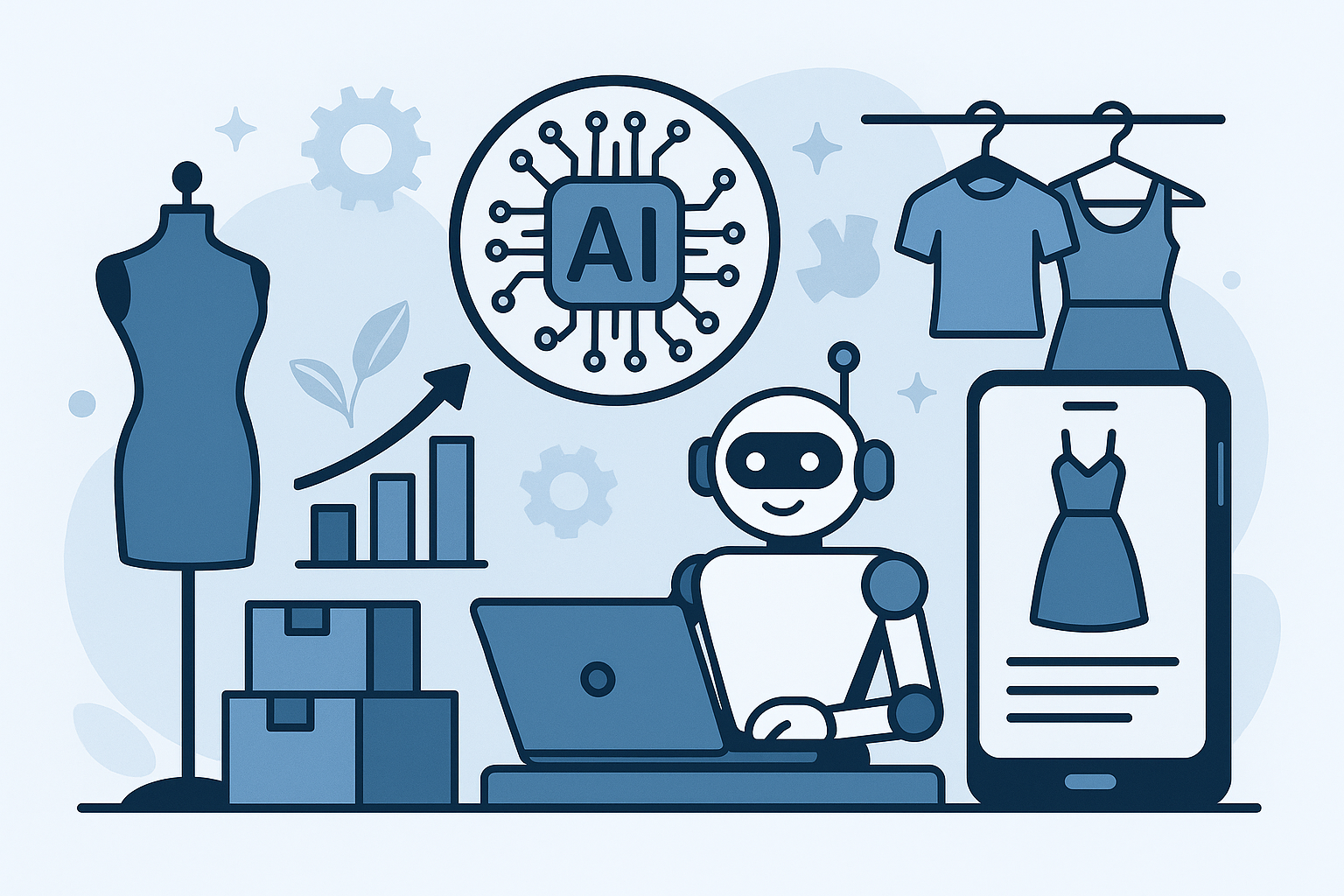While traditional retailers struggle with customer retention and engagement, AI shopping addiction strategies create highly personalized and engaging shopping experiences that maximize user involvement and stimulate repeated visits through behavioral psychology and gamification that transform casual browsing into compulsive purchasing. This isn’t just better e-commerce, it’s systematic engineering of AI shopping addiction through predictive algorithms and psychological triggers.
Here’s what separates e-commerce winners from e-commerce losers: while your competitors use basic recommendations, platforms like Temu and Shein weaponize AI shopping addiction through algorithms that track browsing behavior, purchase history, and preferences to dynamically recommend products, offer tailored discounts, and introduce gamified features that create digital dependency through strategic AI shopping addiction.
The result? Instant gratification from personalized deals and emotional triggers embedded in AI-driven interfaces that encourage users to spend more time browsing while making impulsive purchases, proving that AI shopping addiction doesn’t just increase sales, it fundamentally changes consumer behavior through systematic engagement engineering.
The AI Shopping Addiction Revolution That’s Redefining E-Commerce Success
When e-commerce platforms implement AI algorithms that create highly personalized shopping experiences through behavioral tracking and psychological triggers, they’re not just improving customer experience, they’re fundamentally engineering AI shopping addiction that maximizes engagement and revenue through systematic behavioral manipulation.
AI shopping addiction focuses on personalization that analyzes extensive user data to create shopping environments tailored to individual tastes and needs, offering product suggestions at precisely the right moment to increase engagement and conversion rates through calculated AI shopping addiction strategies.
The success of AI shopping addiction demonstrates how platforms can track users’ browsing behavior, purchase history, and preferences to dynamically recommend products with accuracy that creates the perception of mind-reading through sophisticated AI shopping addiction algorithms.
The transformation proves that AI shopping addiction isn’t just about convenience, it’s about creating compelling experiences that satisfy immediate desires while sustaining long-term consumer engagement through systematic AI shopping addiction engineering.
How Smart Platforms Turn Behavioral Data Into Addictive Experiences Through AI Shopping Addiction
Most e-commerce sites offer generic recommendations, while leading platforms transformed behavioral analysis into AI shopping addiction through algorithms that learn individual preferences while identifying psychological triggers that drive repeated engagement and impulsive purchasing.
The power of AI shopping addiction becomes evident through platforms that analyze browsing patterns, purchase timing, price sensitivity, and product preferences to create personalized experiences that feel individually crafted through comprehensive AI shopping addiction strategies.
Their approach to AI shopping addiction includes AI-powered personalization that reduces decision fatigue by narrowing choices to highly relevant products, speeding up buying decisions while increasing purchase frequency through optimized AI shopping addiction.
When your AI shopping addiction can anticipate customer desires while presenting products at optimal psychological moments, you create engagement that transforms casual shoppers into habitual users through systematic AI shopping addiction implementation.
The Gamification Strategy That Amplifies AI Shopping Addiction
Perhaps the most significant breakthrough in AI shopping addiction is platforms like Temu using mini-games and reward points systems integrated with AI to hook users, providing dopamine hits similar to gambling experiences through gamified AI shopping addiction.
This gamification through AI shopping addiction fundamentally changes e-commerce engagement by incorporating game mechanics that trigger reward centers in the brain while creating psychological investment in platform loyalty through addictive AI shopping addiction features.
AI shopping addiction platforms use gamification to create excitement through countdown timers, social proof showing popularity cues, and animated feedback that makes shopping feel thrilling and rewarding rather than transactional through psychological AI shopping addiction.
The organizations that implement gamified AI shopping addiction will dominate e-commerce engagement while competitors struggle with traditional shopping experiences that cannot compete with addictive game-like interfaces through strategic AI shopping addiction.
The Dynamic Pricing That Drives AI Shopping Addiction
AI shopping addiction extends beyond personalization to include dynamic pricing that adjusts in real time based on demand and user behavior, encouraging quick purchases with time-limited discounts that create urgency through psychological AI shopping addiction.
The pricing optimization in AI shopping addiction creates fear of missing out while leveraging scarcity psychology to drive immediate purchase decisions rather than allowing deliberation that might reduce conversion through manipulative AI shopping addiction.
Their approach to AI shopping addiction includes AI algorithms that test user price sensitivity while identifying optimal discount timing and amounts that maximize conversion without unnecessarily reducing margins through intelligent AI shopping addiction.
When your AI shopping addiction can adjust pricing dynamically while creating urgency through time pressure, you achieve conversion rates that static pricing cannot match through psychologically optimized AI shopping addiction.
The Continuous Adaptation That Sustains AI Shopping Addiction
AI shopping addiction includes algorithms that constantly test user reactions to new products and recommendations, keeping shopping interfaces fresh and compelling while learning from every interaction through adaptive AI shopping addiction.
The continuous learning in AI shopping addiction ensures that personalization improves over time while identifying emerging preferences before users consciously recognize changing tastes through predictive AI shopping addiction.
Their AI shopping addiction approach includes A/B testing at massive scale that identifies which interface elements, product presentations, and messaging strategies maximize engagement for different user segments through systematic AI shopping addiction optimization.
The adaptive capability of AI shopping addiction creates experiences that evolve with individual users while maintaining freshness that prevents habituation through continuously improving AI shopping addiction.
The Emotional Triggers That Power AI Shopping Addiction
The most manipulative aspect of AI shopping addiction is designing interfaces that evoke excitement through countdown timers, social proof, animated feedback, and other psychological triggers that make shopping feel thrilling rather than mundane through engineered AI shopping addiction.
Their approach to AI shopping addiction includes cognitive triggers that reduce rational deliberation while amplifying emotional response that drives impulsive decisions over considered purchases through manipulative AI shopping addiction.
AI shopping addiction leverages behavioral psychology understanding to create interfaces that bypass rational decision-making while triggering reward responses that create satisfaction and craving through systematic AI shopping addiction design.
When your AI shopping addiction can manipulate emotional responses while reducing cognitive barriers to purchase, you create conversion rates that traditional e-commerce cannot achieve through psychologically engineered AI shopping addiction.
The Notification Strategy That Reinforces AI Shopping Addiction
AI shopping addiction includes personalized notifications and retargeting that keep users returning by reminding them of viewed products, price drops, and limited-time offers that create fear of missing out through persistent AI shopping addiction.
The notification tactics in AI shopping addiction balance engagement with annoyance by using AI to identify optimal frequency and timing that maximizes return visits without triggering unsubscribes through calculated AI shopping addiction.
Their AI shopping addiction approach includes push notifications, emails, and retargeting ads that work in concert to maintain platform awareness while creating multiple touchpoints that reinforce shopping habits through systematic AI shopping addiction.
The persistent engagement created by notification-driven AI shopping addiction ensures that platforms remain top-of-mind while creating regular triggers that prompt return visits through strategic AI shopping addiction.
The Conversational AI That Enables AI Shopping Addiction
AI shopping addiction leverages conversational agents and chatbots that enable natural interaction while driving impulse buying with instant responses that reduce purchase friction through interactive AI shopping addiction.
The conversational interface in AI shopping addiction creates personal connection perception while providing immediate assistance that prevents purchase abandonment through supportive AI shopping addiction.
Their approach to AI shopping addiction includes AI assistants like Amazon’s Rufus that reduce friction by pre-filling carts, alerting users to deals, and completing transactions to make shopping effortless and habitual through frictionless AI shopping addiction.
When your AI shopping addiction can provide instant conversational support while guiding users toward purchase decisions, you create seamless experiences that maximize conversion through assisted AI shopping addiction.
The Hyper-Personalization That Deepens AI Shopping Addiction
The most powerful aspect of AI shopping addiction is hyper-personalization that creates emotional attachment to platforms by making users feel uniquely understood while delivering experiences that seem individually crafted through comprehensive AI shopping addiction.
AI shopping addiction achieves this through learning algorithms that adapt in real time while predicting desires before conscious recognition, creating seemingly magical experiences through sophisticated AI shopping addiction.
Their AI shopping addiction includes recommendation engines that smartly upsell and cross-sell by understanding product relationships and user preferences, turning browsing into multi-item cart additions through intelligent AI shopping addiction.
The personalization depth in AI shopping addiction creates platform loyalty by making alternative sites feel generic and inadequate in comparison through superior AI shopping addiction.
The Real-World Impact Of AI Shopping Addiction
Shein and Temu extensively use AI shopping addiction to analyze behavior and sales trends, employing tactics like AI-powered mini-games and dynamic pricing to boost customer loyalty and repetition through addictive AI shopping addiction.
The documented success of AI shopping addiction includes platforms that achieve higher engagement, more frequent purchases, and increased average order values compared to traditional e-commerce through strategic AI shopping addiction.
Their AI shopping addiction demonstrates how behavioral engineering combined with AI capabilities can transform casual shoppers into platform-dependent users who struggle to resist browsing and purchasing through systematic AI shopping addiction.
The competitive advantage created by AI shopping addiction explains why leading e-commerce platforms invest heavily in behavioral psychology and AI personalization while traditional retailers struggle to compete through inferior AI shopping addiction.
The Ethical Concerns Around AI Shopping Addiction
The most troubling aspect of AI shopping addiction is potential for exploitation through deliberate engineering of compulsive behaviors that may harm consumer financial wellbeing while benefiting platform profits through predatory AI shopping addiction.
AI shopping addiction raises questions about responsibility when platforms knowingly implement features designed to create dependency and override rational decision-making through manipulative AI shopping addiction.
The regulatory implications of AI shopping addiction will likely increase as governments recognize how platforms engineer compulsive behaviors similar to gambling addiction through calculated AI shopping addiction.
When your AI shopping addiction creates genuine behavioral problems and financial harm for vulnerable users, the ethical costs may ultimately outweigh business benefits through irresponsible AI shopping addiction.
The Consumer Defense Against AI Shopping Addiction
Understanding AI shopping addiction mechanics enables consumers to recognize manipulation tactics while implementing strategies to resist engineered compulsion through awareness of AI shopping addiction.
The defense against AI shopping addiction includes recognizing personalization as calculated manipulation rather than helpful service while implementing boundaries around shopping behavior through conscious AI shopping addiction resistance.
Their approach to countering AI shopping addiction involves awareness of psychological triggers, deliberate shopping restrictions, and critical evaluation of whether purchases serve genuine needs through mindful AI shopping addiction management.
The consumer empowerment against AI shopping addiction requires education about behavioral engineering tactics while promoting conscious consumption rather than impulsive purchasing through informed AI shopping addiction resistance.
The Future Belongs To AI Shopping Addiction Masters
Your e-commerce platform’s engagement transformation is approaching through AI shopping addiction technology that will define competitive advantage for platforms willing to engineer behavioral dependency. The question is whether your organization will implement sophisticated AI shopping addiction or lose customers to competitors who master behavioral engineering.
AI shopping addiction isn’t about technology alone, it’s about strategic behavioral psychology implementation that transforms casual shoppers into platform-dependent users through capabilities that maximize engagement and lifetime value.
The time for strategic AI shopping addiction implementation is now. The platforms that act decisively will establish engagement levels that become increasingly difficult for competitors to match as AI shopping addiction capabilities mature and consumer expectations evolve.
Leading platforms proved that comprehensive AI shopping addiction works at massive scale while delivering measurable business benefits. The only question remaining is whether your executive team has the vision and willingness to implement systematic AI shopping addiction before competitors make it their advantage in e-commerce markets.




